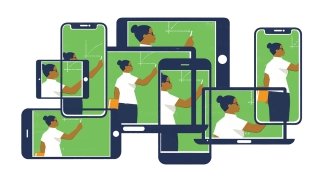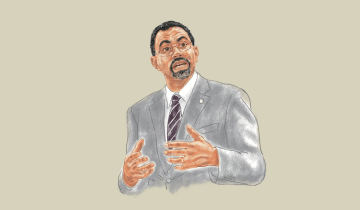USC’s fall semester began on Aug. 17, and while the university originally hoped to offer a hybrid of online and in-person classes, as California and many other parts of the country experienced a surge in COVID-19 cases, guidelines from state and county public health officials resulted in the university shifting courses online, with some exceptions for clinical education.
Transitioning to remote learning has not been without its hiccups. For faculty, “learning the technology has been the No. 1 challenge,” says Ginger Clark, USC’s assistant vice provost for academic and faculty affairs and professor of clinical education at the USC Rossier School of Education.
Clark directs the Center for Excellence in Teaching (CET), which provides resources for developing, evaluating and rewarding teaching excellence as well as best practices in course design. To say that the center has been busy since USC first shifted courses online in March is an understatement. It runs a six-week course, “Accelerated Online Teaching Intensive” (AOTI), which teaches faculty how to use online instruction tools, holds workshops to provide schools with customized training, and conducts smaller group and one-on-one consultations with faculty.
Since March, “over 2,500 faculty have attended CET workshops,” and 900 have participated in the AOTI course, Clark says. Yet, she stresses, “those numbers don't reflect the hours spent in other types of training and course preparation.”
Faculty have had to reexamine how they teach and devise ways to present information in ways that are engaging and understandable. Clark sees a silver lining in this process, as she believes it “may also be the catalyst for a renaissance period for teaching across the world, especially as we consider how our teaching connects to issues raised by Black Lives Matter, #MeToo and other movements toward an inclusive, equitable society.”
The pivots of the spring and fall will have a lasting impact on how we educate. Faculty will look at online learning differently, Clark believes, as they’ve now experienced the drawbacks and benefits of online learning. Some might even find that their courses work better online.
The tools we’ve turned to for online learning have given educators and students more options, Clark says, and if “we can find a way to ensure all learners have access to adequate technology,” which she notes is a big if, online learning “can mitigate a number of challenges we face in education … resulting in a more accessible, flexible and equitable” system.
For example, recorded lectures give students the opportunity to revisit material and the flexibility to attend class on their own time if other obligations make it difficult. And some students might be more comfortable participating in online classrooms.
This spring, the center is planning “discipline-specific advanced training for things like performance, math-based and lab courses,” Clark says. Most important, is that we learn from this moment. “The time we all dream of” Clark says, is when we are using “these tools by choice because they amplify the effectiveness of our teaching.”





